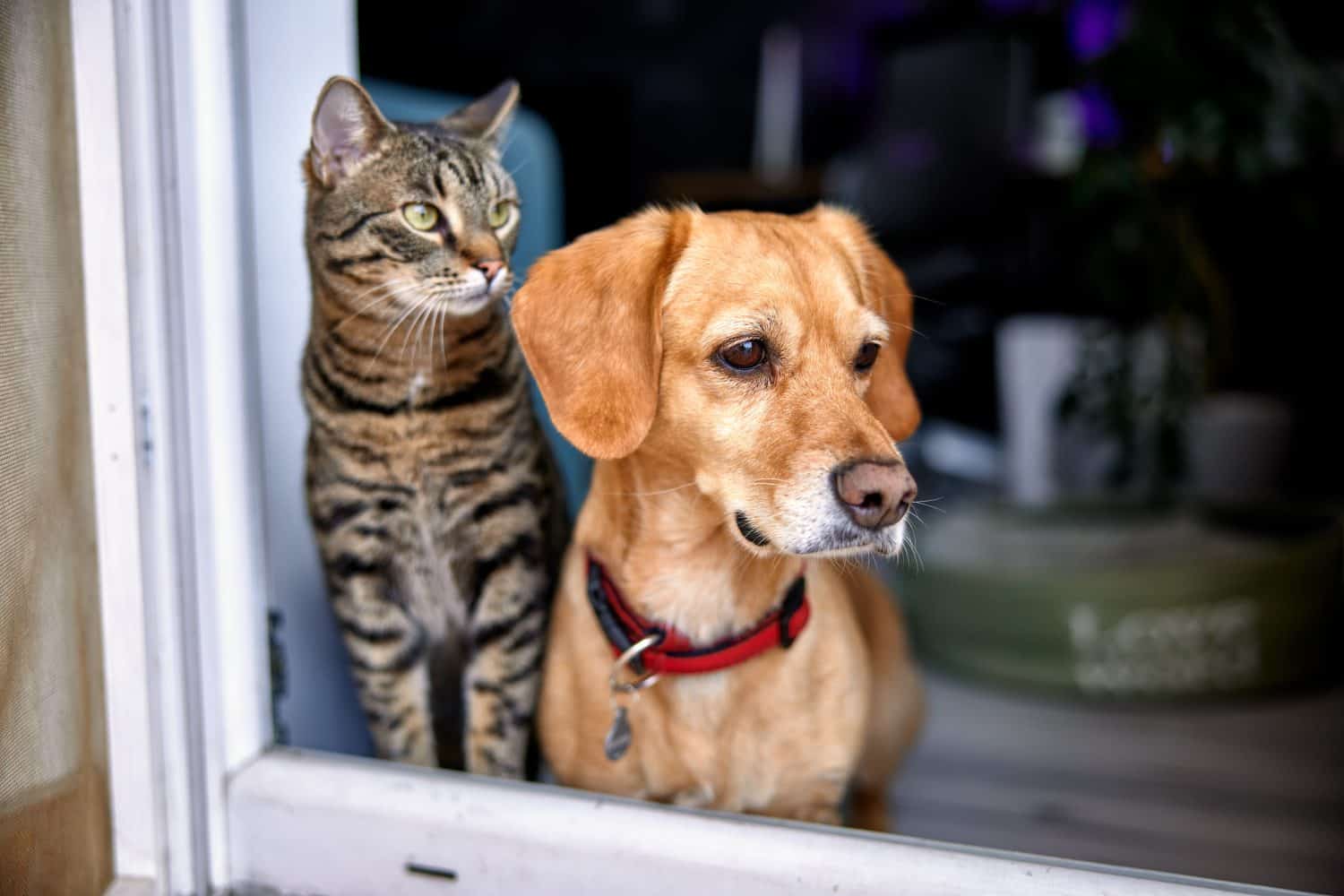People are known to personify their pets, attributing uniquely human characteristics to animals that cannot process and express information that way. After all, when we don’t understand what our pets are doing, it’s easy to attribute the behavior to a more human perspective than what a typical cat or dog is capable of. However, some behaviors just can’t be explained by personification.
There is such a strong deviancy from what humans would do that it’s impossible to place a human perspective on them. Most of us pet people have stopped to ask our pets what they think they’re doing at least once. However, most behaviors have an underlying cause. So, let’s examine the scientific reasons behind some of the weird things cats and dogs do. The truth behind these weird behaviors might surprise you.
We started this list by independently identifying the most common weird behaviors for cats and dogs. Then, we cross-referenced those lists to determine which ones were shared between the two species. Once we determined which behaviors were shared between cats and dogs, we sourced scholarly opinions, such as peer-reviewed journals and primary sources from zoologists, to understand what those behaviors meant and why they do them. In some cases, the reasoning for cats and dogs is different. S
o, we’ve provided the information and sources for the explanation of behavior in both species. However, many of the shared behaviors also share an evolutionary trait. So, we have not split the list into two independent sections. (To learn more fun facts about your furry friends, check out 32 Paw-some Facts You Probably Don’t Know About Dogs.)
Coprophagia
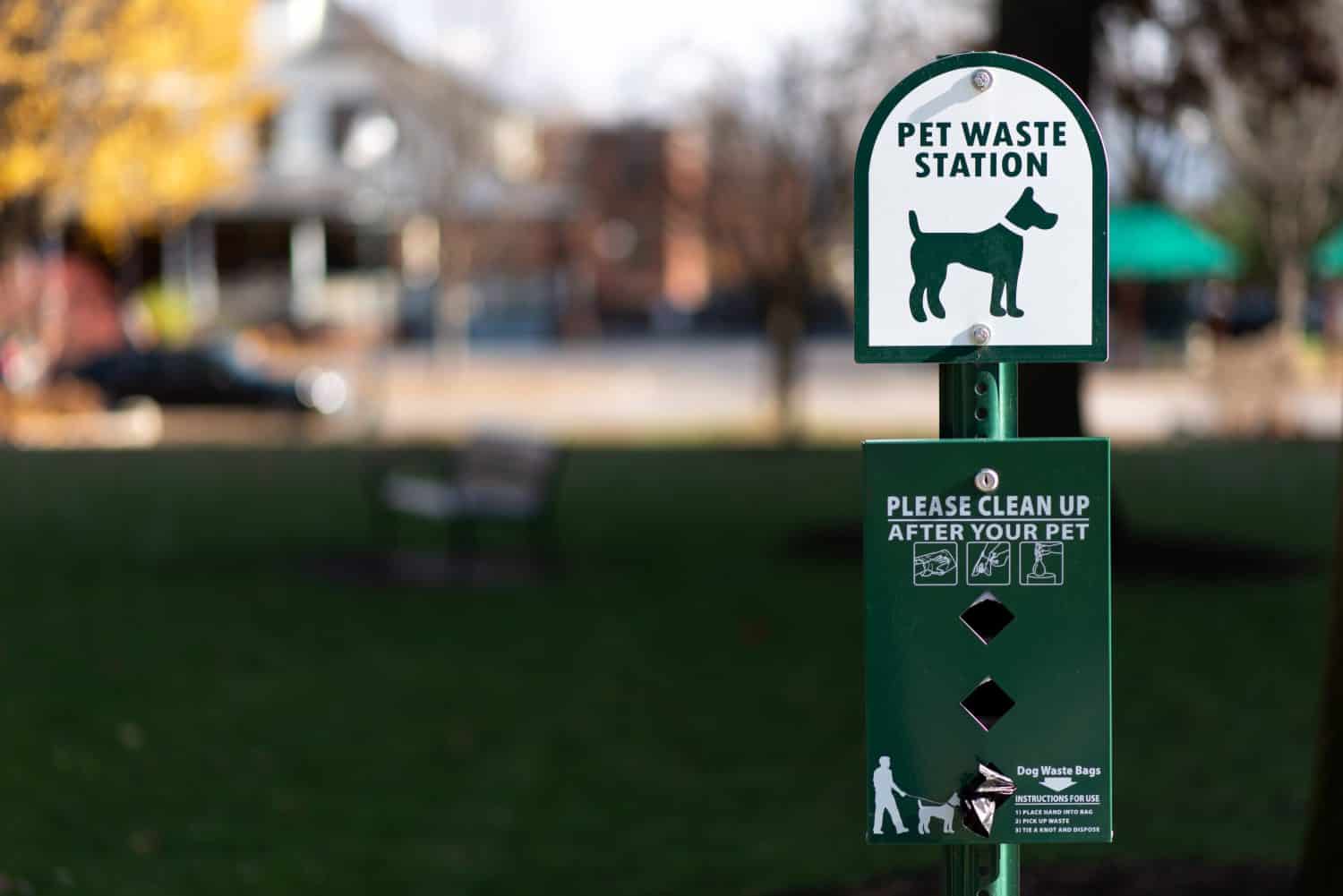
The word “coprophagia” is a fancy way to say “eating poop.” While the behavior is mostly associated with dogs, cats do it too. In fact, at certain stages of life, it’s relatively normal for both cats and dogs. Babies aren’t born with bacteria in their digestive tracts—also known as intestinal flora. However, they need to develop healthy gut flora to aid digestion and ensure that they can break down their food and absorb the nutrients. Thus, some scientists theorize that young kittens and puppies will engage in coprophagia to stimulate the growth of gut bacteria.
However, as with any behavior, sometimes what starts as normal intestinal development can become a compulsive behavior. Puppies and kittens can develop a taste for fecal matter, leading to the behavior continuing beyond what is normal and healthy. In the case of a cat or dog that has acquired a taste for it, they actually enjoy eating fecal matter. It tastes good to them, and it’s going to be much harder to break that habit because, unlike a person, you can’t explain to your cat why it’s unacceptable.
Eat Each Other’s Food
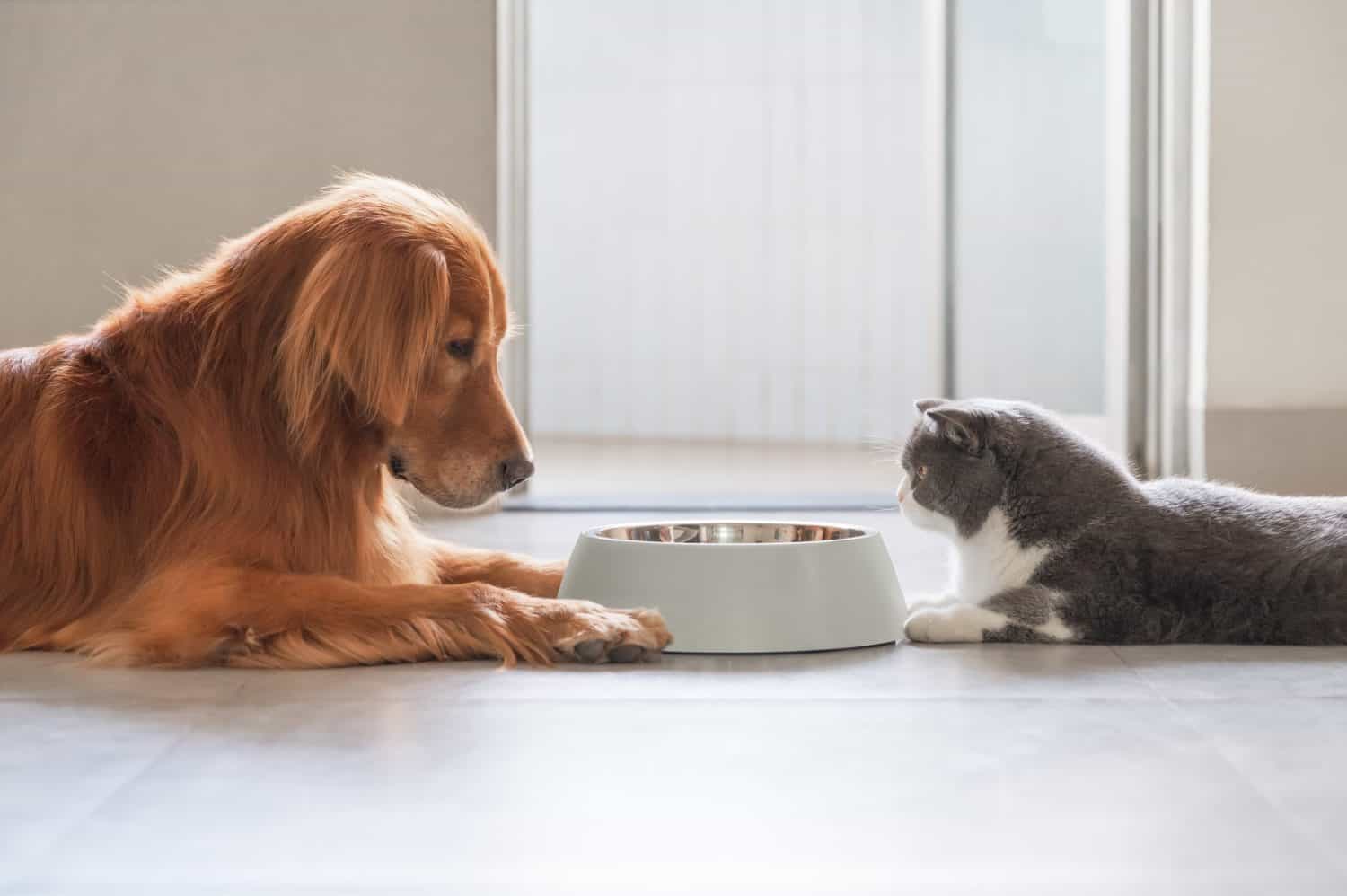
Cat food is not unpalatable to dogs and vice versa. In many cases, dogs will eat cat food without complaint. Wet cat food likely appeals to dogs thanks to its pungent aroma. Additionally, many cat owners leave out their cat’s food all day, so dogs may take advantage simply because the food is available.
The real issue here is that cat food is not nutritionally complete for dogs. Additionally, and speaking of cophragia, dogs who live in a house with cats may develop a habit of raiding the litter box and eating cat poop.
In this case, it is typically because cat poop smells like cat food to your dog. So, when your dog gets a whiff of that box filled with what smells like cat food, it may not be able to distinguish the food from the poop because they smell similarly.
Cats, on the other hand, may eat dog food in an attempt to establish dominance. They may also be drawn in by hunger or the smell of your dog’s food. Keep in mind that it isn’t healthy for cats and dogs to eat a lot of each other’s food, so this behavior should avoided with tactics such as separating the pets’ feeding stations.
Circle Before Lying Down
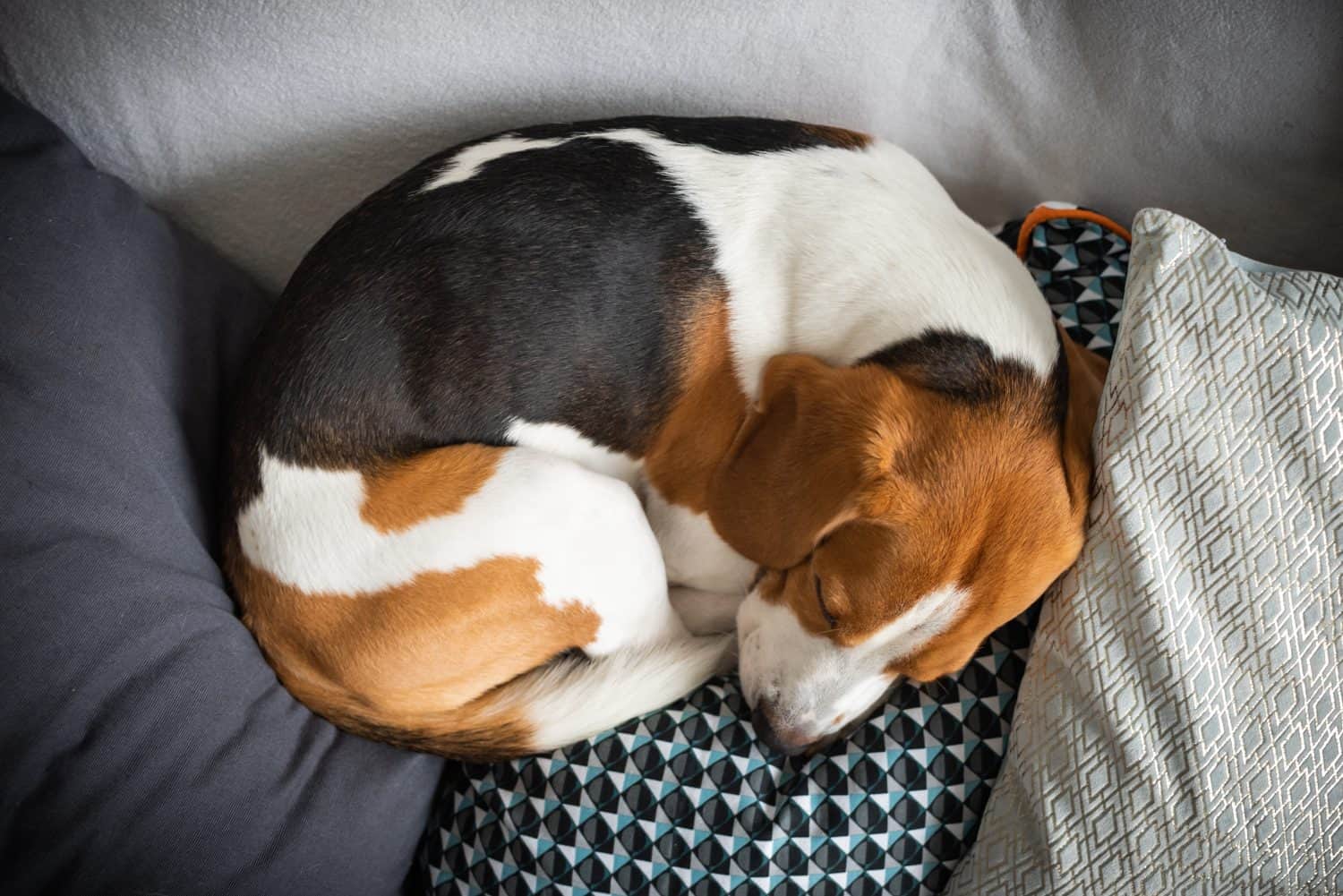
Both cats and dogs are known to circle in place before they lie down for a nap. There are many theories as to why they do this. However, most scholarly opinions agree that the behavior is an evolutionary trait aimed at efficient and effective survival. There are a few major factors that differ between the two species, as well as some that are the same.
For starters, cats and dogs both rely heavily on their senses of smell to identify and assess threats. By turning around before they lie down, they can position themselves downwind. The turning allows them to determine which way the wind is blowing. By positioning themselves downwind, they can better sense approaching threats by smell, as the scent particles will be moving in that direction.
This nesting behavior also moves around the stuff on the ground, effectively rooting out any unseen threats, such as snakes or insects that live in the ground. By moving around the area they plan to sleep in, they can create a safer space that doesn’t have any unruly guests that might cause trouble. It also helps mark their territory and signal to other cats and dogs that this area is spoken for.
Finally, it just helps them get comfortable. In the wild, cats and dogs would use the circling to pat down tall grass and make a more comfortable bed than simply sleeping on the cold ground. Even though housepets don’t have to worry about this, the behavior is ingrained in their instincts. They’ll do it even if they don’t have to.
Follow You Into the Bathroom
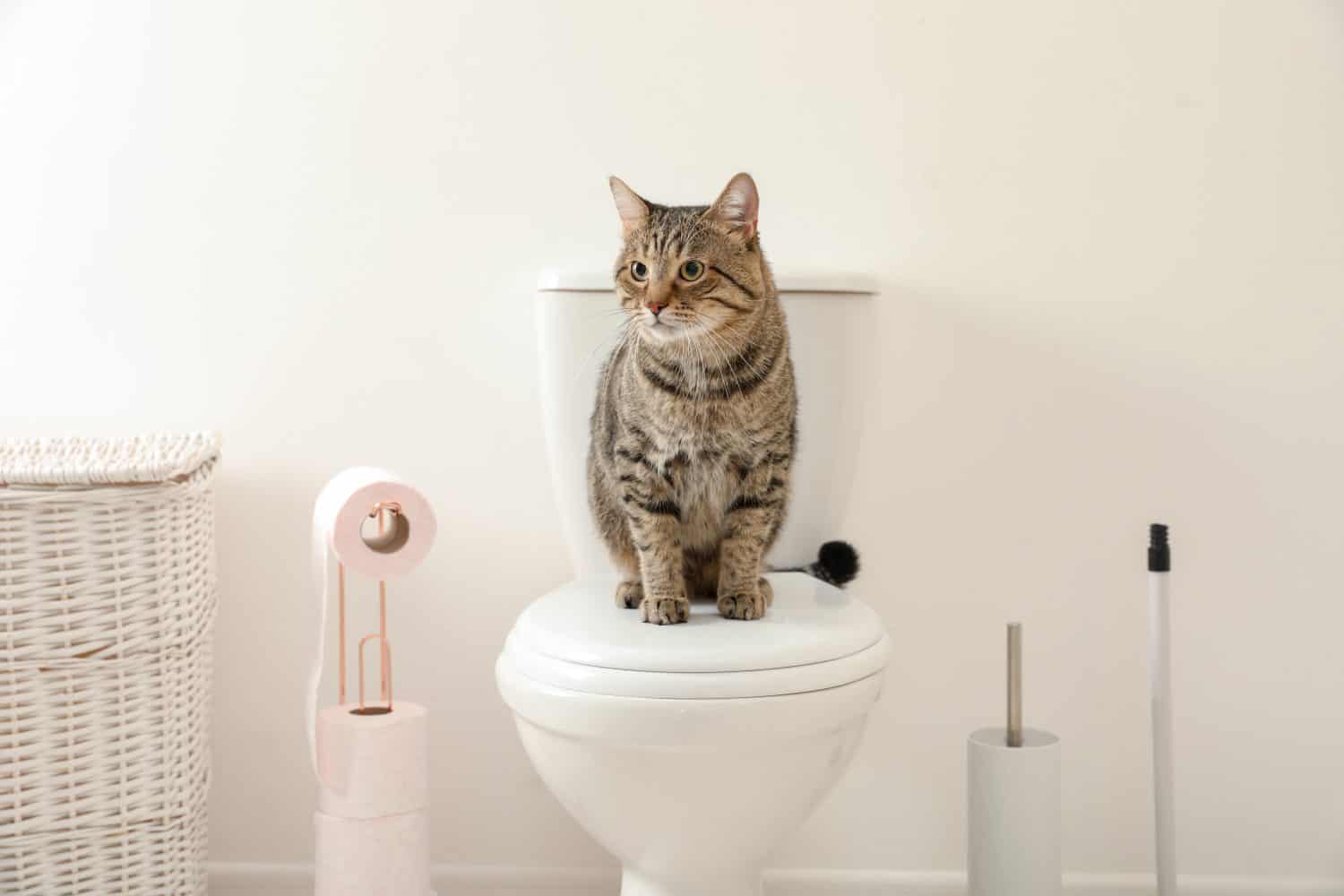
Cats and dogs are known for following their humans everywhere, even into the restroom. Some people find it cute. Others find it invasive. However, whether you love or loathe the company in the toilets, it’s hard to deny that many people are curious why cats and dogs are so insistent on being included in such an intimate activity.
One of the primary reasons why cats and dogs follow their humans to the bathroom is simply because they love you. They enjoy your company and they’re not too bothered by the fact that you’re pooping. They just want to be around you. It’s an innocent reason, maybe even a little bit cute. However, that doesn’t make it any less annoying. Especially when you try to shut them out and they scratch and whine at the door.
They may also follow you due to separation anxiety. Cats and dogs are social animals that operate in groups in the wild. Your pet views you as part of their pack and they want to make sure you’re okay at all times. This drive can lead to your pet feeling anxious when they can’t see you, also known as separation anxiety. If your pet has separation anxiety, they might get upset when you try to keep them out of the bathroom when you’re in there.
It may also be due to your pet’s internal clock. If your cat or dog is used to something happening at a certain time, like feeding, walking, or playtime, they may be trying to remind you not to forget about them.
Eat Grass
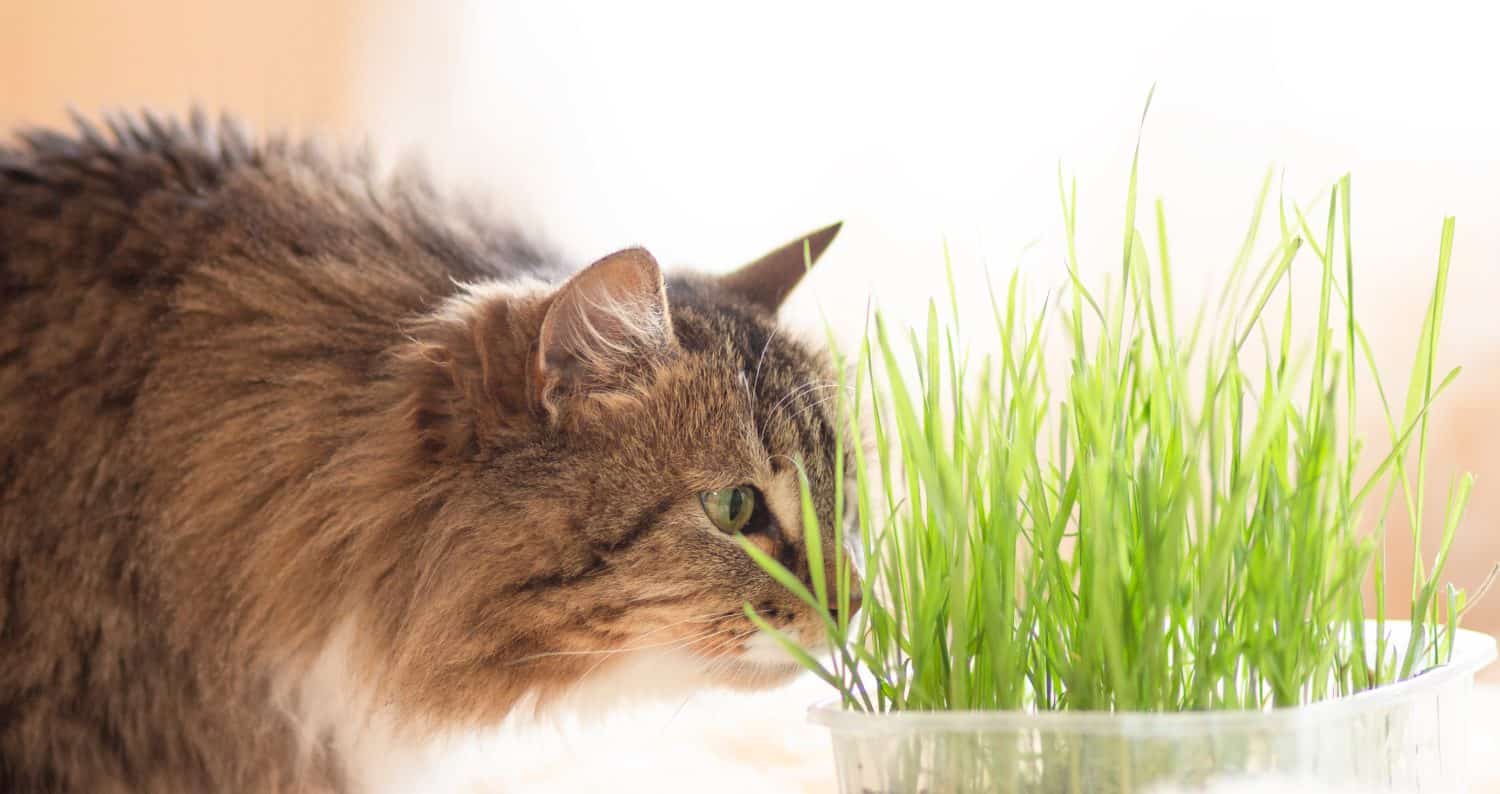
Both cats and dogs can be observed eating grass. If you let your cat go outside, you might notice it chowing down on your lawn. Dogs love grass, too. Whether they’re rolling in it or eating it, it’s hard to ignore how attracted to grass dogs can be. The attraction to grass has biological roots. However, dogs and cats love grass for different reasons.
Dogs may eat grass if they have a dietary deficiency, particularly in fiber. However, they may also eat grass for pleasure or out of boredom. So, if your dog is regularly caught with a mouthful of grass, start by assessing their diet. If your dog’s diet is well-rounded, there’s no real reason to stop them from eating grass unless it’s making them sick. You can help reduce your dog’s urge to eat grass by ensuring their diet is nutritionally complete and that they have plenty of toys and social interaction to occupy their time.
Cats also eat grass and other plant matter. In a survey done on 1000 cat owners, 71% reported catching their cat eating greenery at least six times in their lives. Only 11% were never seen eating some kind of plant matter. Scientists initially thought that cats ate grass and other plants to make themselves throw up when they felt ill. However, in that same study, 91% of respondents said that their cat did not appear ill after consuming plant matter.
Instead, scientists believe that eating grass is instinctual for cats, as the plant matter stimulates their gastrointestinal tract and helps them expel parasites. This behavior is present and observable in other species, such as chimps.
Lick You
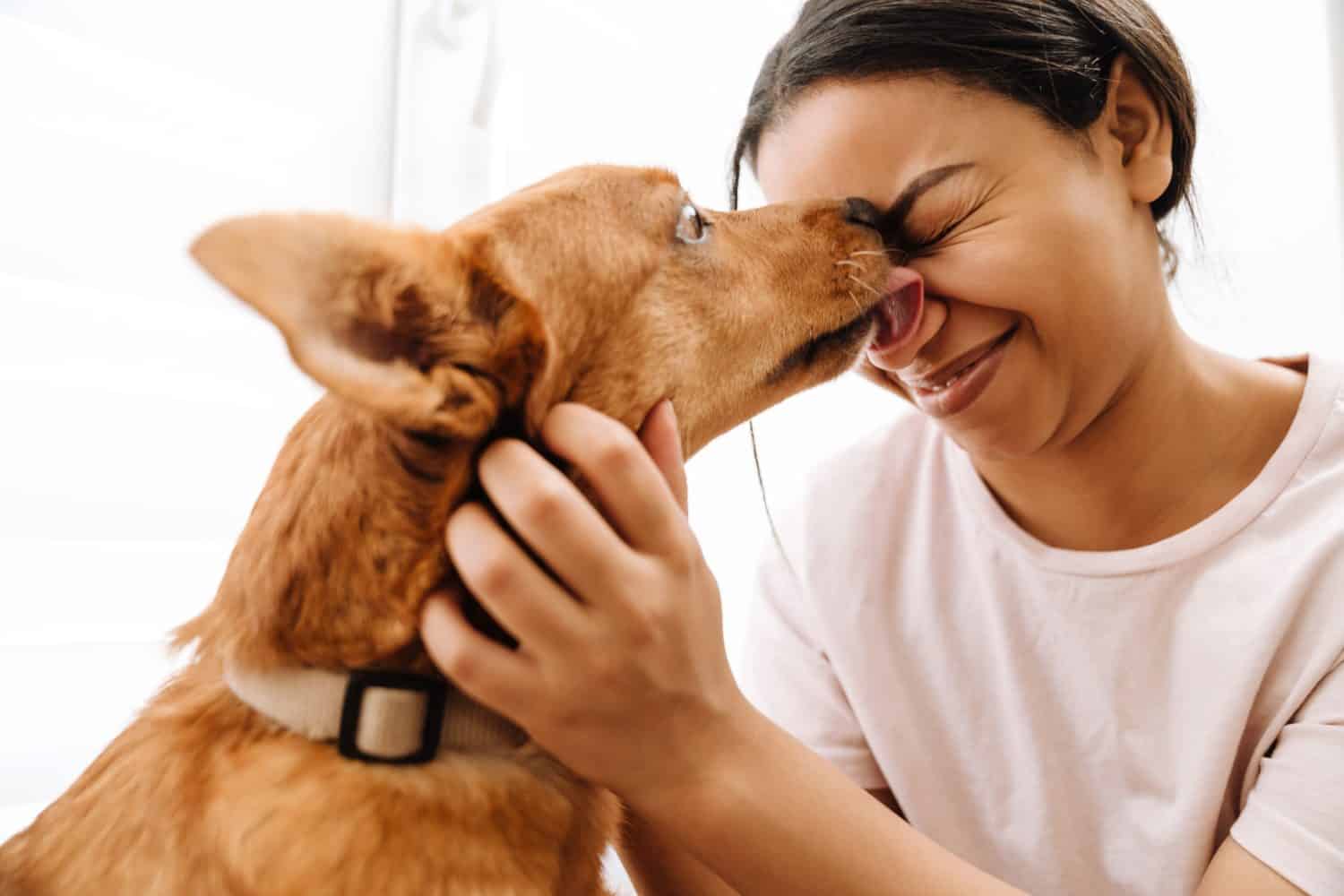
This one isn’t super weird to pet owners but it can definitely be strange to people who don’t have pets. After all, humans don’t typically lick each other. However, the good news is that licking is totally normal for cats and dogs. There are many driving forces behind why a cat or dog might lick you, though. In some cases, it can be indicative of a deeper problem.
Both cats and dogs release endorphins when they lick you and your brain likely releases endorphins too. Endorphins are the hormones that make your brain feel good. So, an easy explanation for why cats and dogs lick is that it makes them feel good.
Additionally, dogs rely more on scent than taste to figure out what they should and should not eat or lick. Dogs also love stinky things. Smells are hugely important for dogs and their preferred smells are a little different than what humans tend towards. Thus, they’re going to be drawn to parts of our bodies that have strong smells, such as our feet, faces, and armpits. Our hands also interact with everything in the world. We use them to touch tons of things that we may not be able to smell, but our dogs can.
For cats, licking is a grooming behavior. Cats engage in allogrooming—socially grooming other cats—as a bonding behavior. Thus, your cat is trying to bond with you when they lick you all over. Additionally, they also enjoy good smells, much like dogs. So, it’s also possible that you smell delightful to your cat, especially if you’re sweaty and gross by human standards.
Sniff Each Other’s Backsides
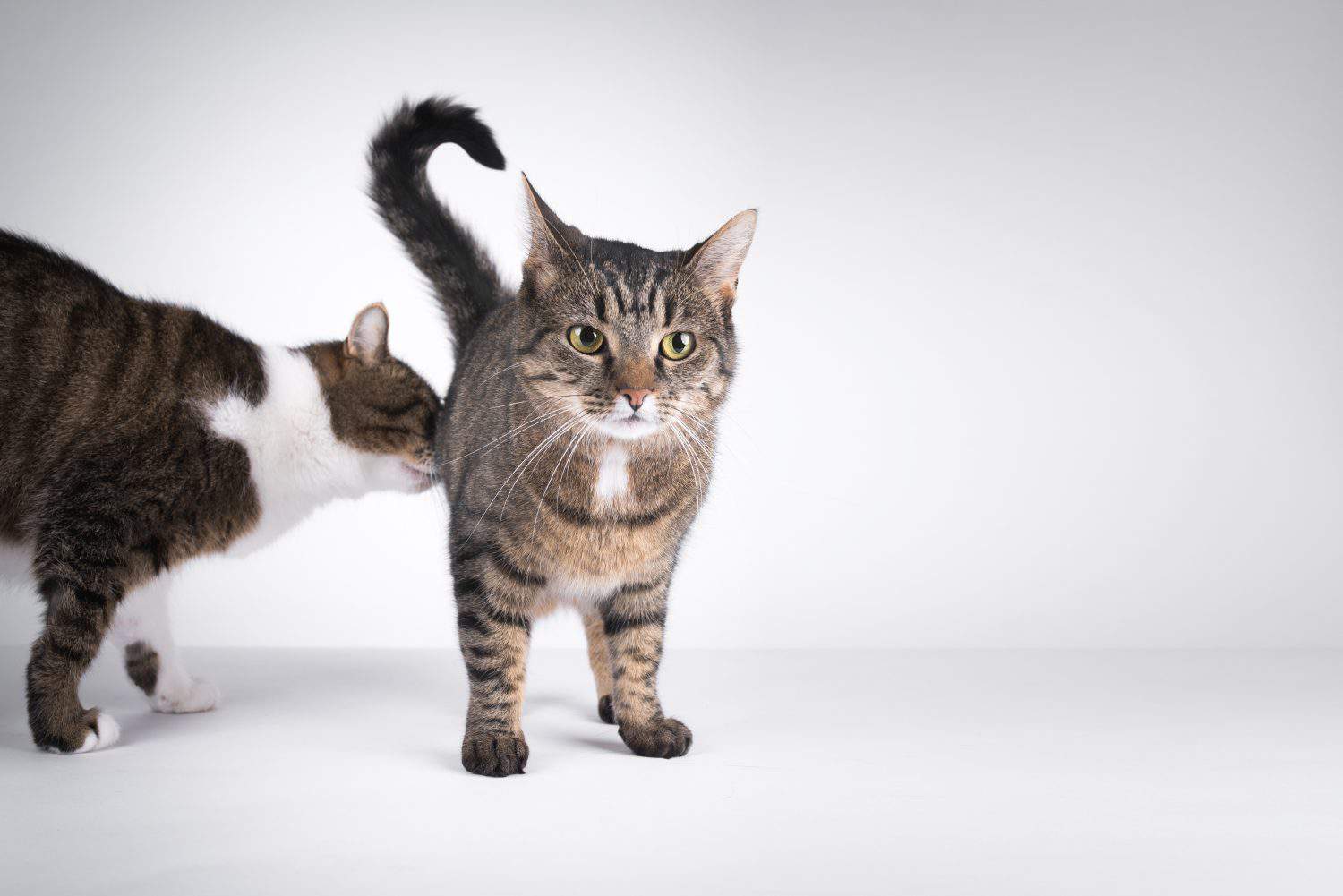
While most people think of dogs when they think of sniffing butts, cats do it too. Many cat owners report that their cats have an absolute field day with their dirty underclothes. However, this doesn’t answer the question of “why butts in particular?” Of all the places to sniff, the rear end seems like an odd choice. There is a scientific reason for it, though.
Cats and dogs have two small sacs known as anal glands in the butt area. These glands secrete pheromones and typically empty naturally when the cat has a bowel movement. Due to the scent of the stool, most owners don’t notice the anal gland secretion. However, this secretion tells cats and dogs a massive amount of information about the other animal.
From sniffing the anal gland secretion, a cat or dog can determine whether they have met this particular animal before, whether this animal is friendly or aggressive, if the other animal is feeling ill and many other crucial pieces of social information. The sniffing of the anal glands also helps the two animals establish a dominance hierarchy where the initiator is the dominant one and the submissive one waits their turn.
For dogs, this behavior also functions as a calming mechanism. It tells your dog that everything is alright and that they don’t necessarily need to be fearful. Cats, on the other hand, may find the butt sniffing to be a little invasive. They might not want to give out all the information that their anal gland secretions can. So, they might sit down and wrap their tail around themselves to prevent their butt from being sniffed.
Chase Their Tails
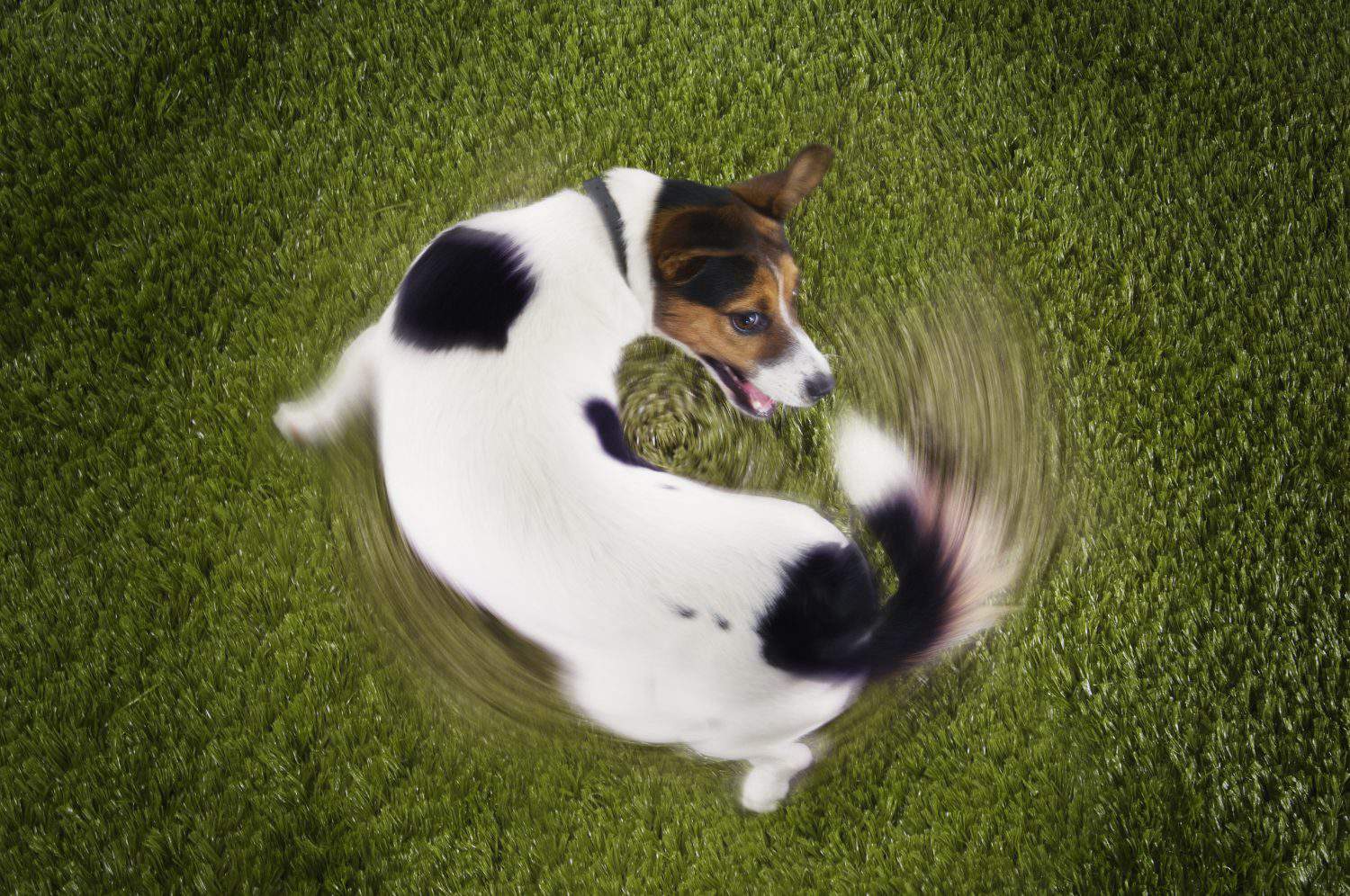
Tail chasing is also typically associated with dogs. However, cats do it, too. In most cases, a quick bout of tail chasing is an innocuous way for your pet to have a little extra fun. The danger can come when a pet is doing it compulsively and can’t stop, or if they’re doing it to sate a physical need such as pain or itching.
Puppies are the most likely culprits of tail chasing. Usually, when a puppy is in the stage of development where they’re starting to explore the world around them and learn about new things, they’ll start to chase their tails out of curiosity and boredom. As long as the behavior isn’t interfering with your pet’s life, there isn’t a cause for immediate concern.
However, if your dog or cat is constantly chasing their tail, it could be a sign that they have unaddressed medical concerns. Compulsive tail chasing can be a sign of anxiety in cats and dogs, similar to nail biting in humans. If your pet can’t be redirected to more healthy behaviors, you’ll need to address the underlying causes of the tail chasing for their safety.
Gnaw on Their Body Parts
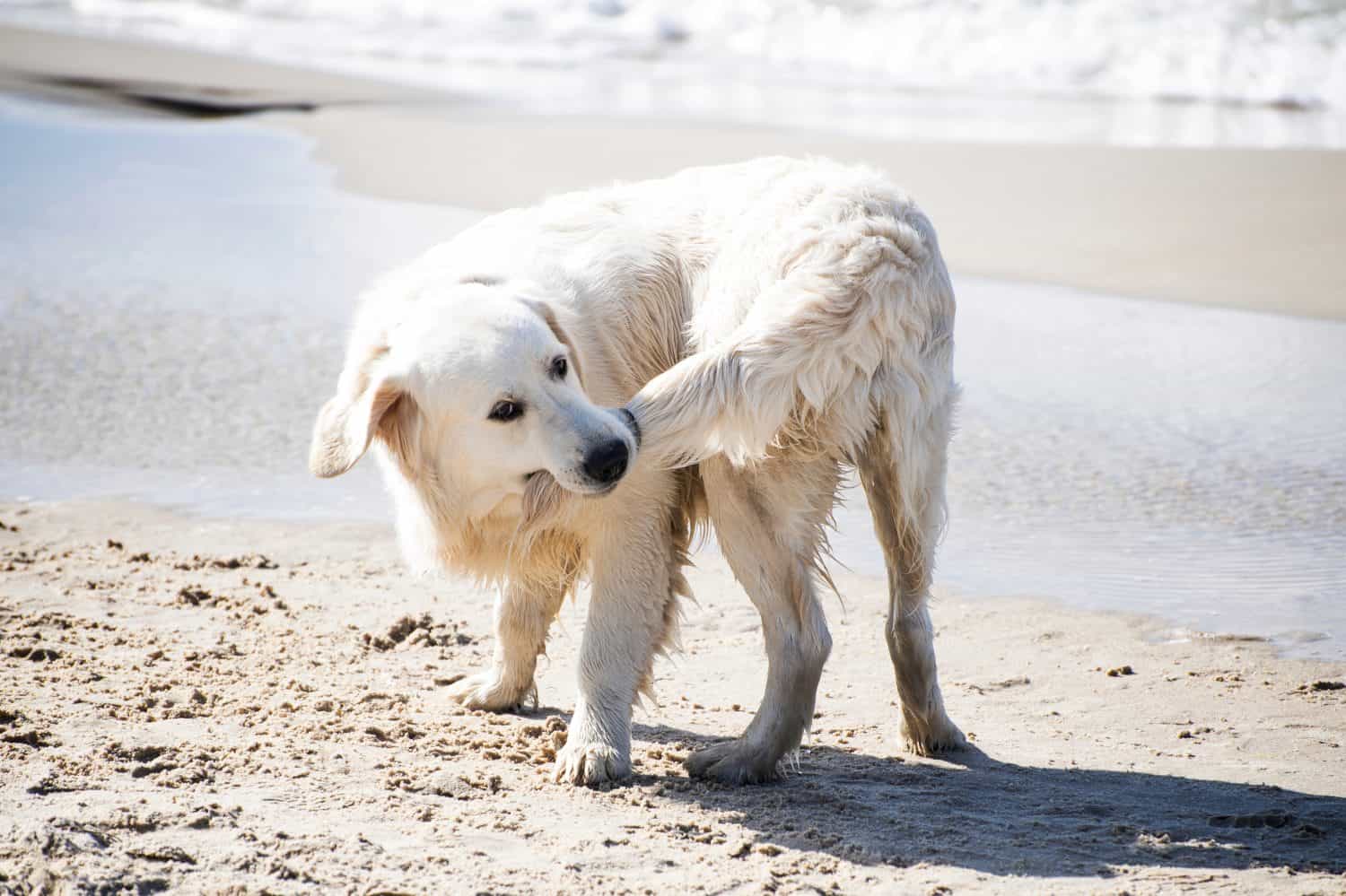
In the same vein as chasing their tail, another weird thing cats or dogs may do is chew on their tail or other parts of their body. This is typically a more concerning behavior. Biting the tail can also be a sign that the tail is in pain. Just like humans will cradle or squeeze a body part that hurts, dogs and cats will sometimes gently gnaw on an aching body part.
It could also be a sign that they’re itchy, which isn’t a cause for concern on occasion; everyone gets itchy sometimes. However, if your dog or cat is always itchy and it’s always the tail, that could be a sign of something more serious. If your pet continues to chew on a body part, or if they bite until they hurt themselves, you’ll need to address the underlying causes.
Steal Your Socks
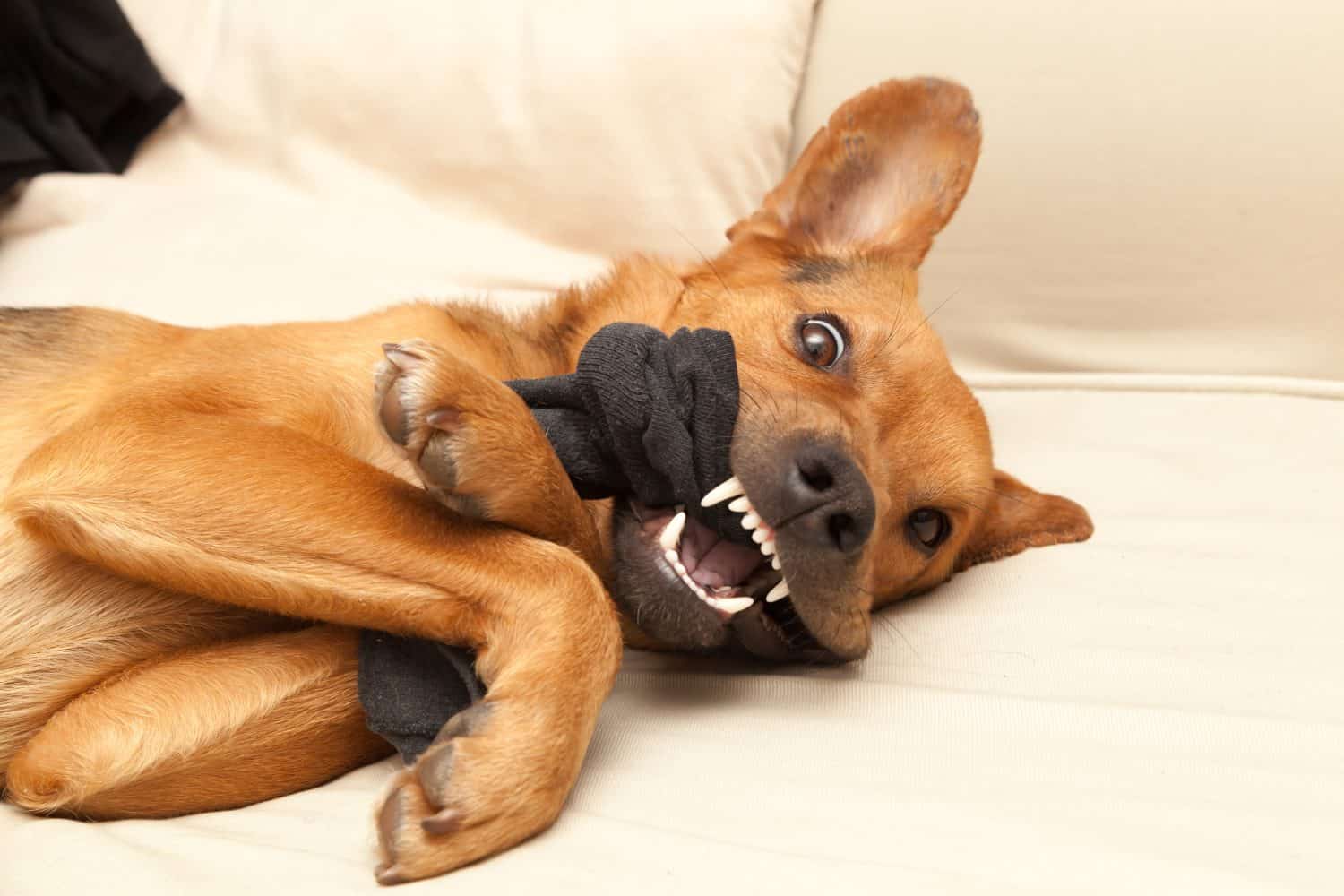
Sock stealing is a behavior that both cats and dogs are known to exhibit. It’s pretty easy to explain when you take into account how cats and dogs interact with and understand the world around them. Both species rely heavily on their senses of smell to learn about the world around them. Their schnozzes are significantly more powerful than ours and they can learn a lot about something just by sniffing it. As a result, cats and dogs are often drawn to things that have strong smells.
Used socks typically stink. Even if you don’t think your socks stink, your pet can probably smell them from a mile away. They don’t just stink of random smells either, they smell like you, and you’re probably one of your pet’s favorite people if you’re not their all-time favorite human. So, they’re going to be drawn to your socks and underwear because they smell like you. The smells associated with you are comforting to your pets. After all, you feed them and provide them with everything they need to thrive. They associate you, and, thus, your smell, with their creature comforts and happy memories.
Additionally, sock stealing can be an attention-seeking behavior. Pets need attention and it doesn’t always have to be positive attention. Sometimes when your pet wants your attention, being yelled at is an adequate balm for their lonely hearts. So, if your pet learns that stealing your socks makes you chase after them and pay attention to them, they’re going to keep doing that whenever they want attention. (To read more about animals, check out The Official Pets and Animals of Every State.)
